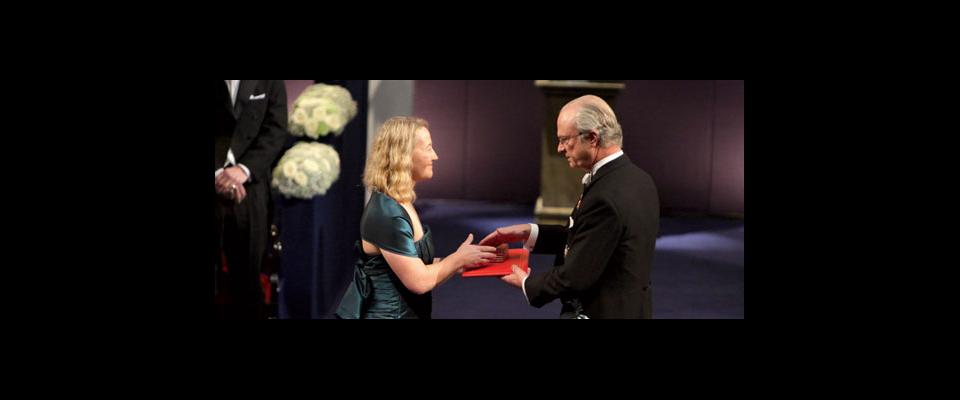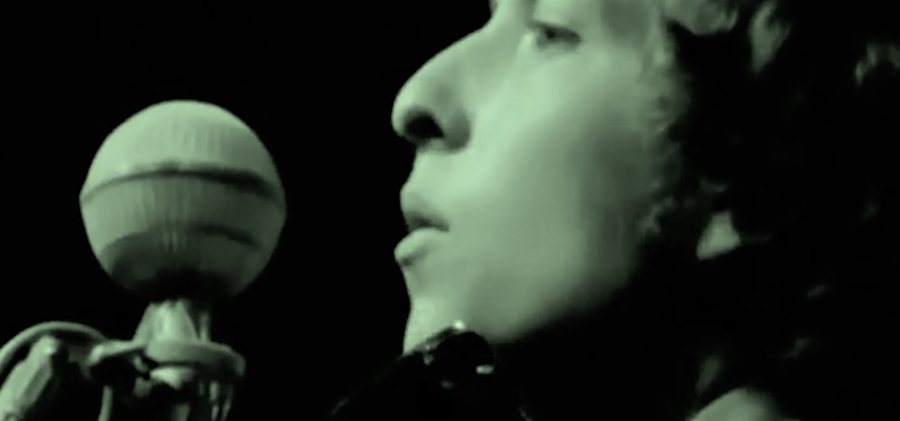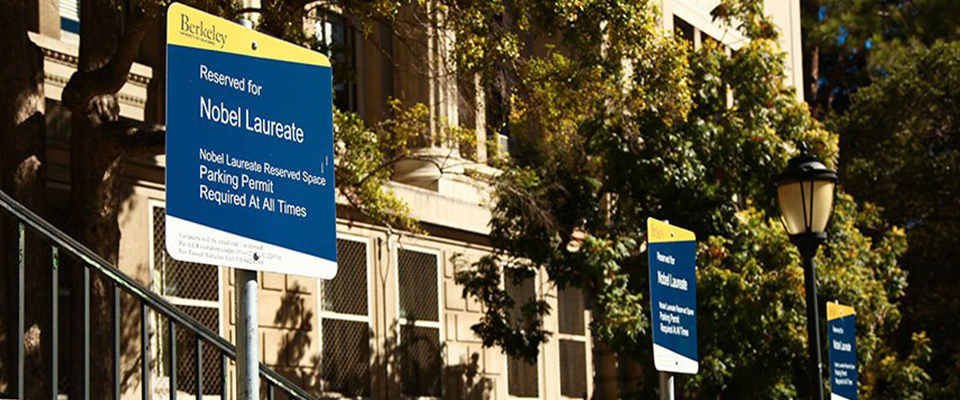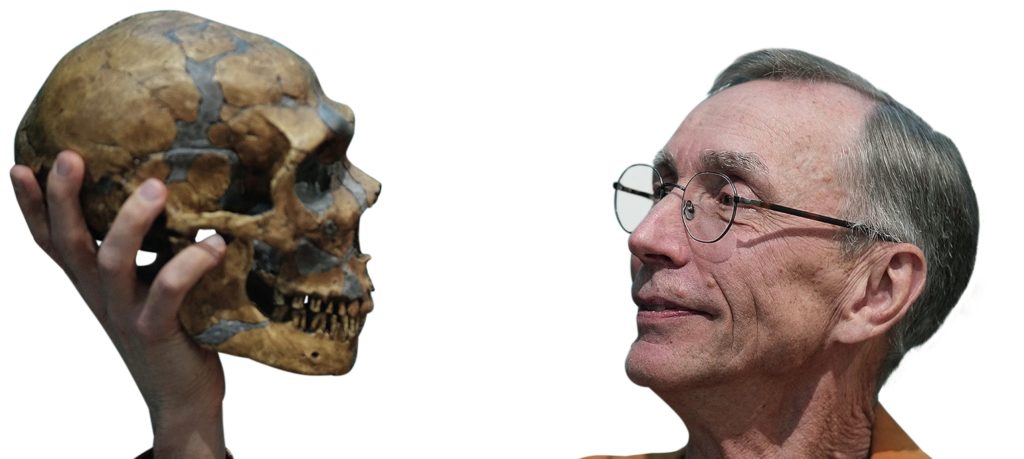Cal grad student Carol Greider got started early making monumental discoveries in cell biology
Several suitcases were open in Carol Greider’s Baltimore living room on a misty day in December 2009. The new recipient of the Nobel Prize in Physiology or Medicine was just back from Stockholm, where she had partied hard with her two young kids and a group of close friends. She hadn’t unpacked yet, and neither had the kids, who had already left for school, but she couldn’t get back to the lab fast enough.
It’s the same dedication that has made her a Nobel laureate at 49 years of age—remarkably young for the distinction. It takes decades, often, for the implications of research to become clear, and winners of the Nobel Prize are sometimes in their 70s or older when their work is finally recognized. But Greider’s Nobel, shared with Elizabeth Blackburn of UCSF and Jack Szostak of Harvard Medical School, recognizes discoveries made when Greider, Ph.D. ’87, was but a scientific babe-in-arms: a new grad student at Cal in her early 20s.
“I knew I wanted to work with Elizabeth, and I knew the problem I wanted to work on,” Greider explains. “Usually there’s some signaling early on, and you know you’ll get in here but not there, and maybe you won’t get to work on the problem you like, but at least you’ll be in. There was no signaling between Elizabeth and me. Yet on the day of our interview she accepted me, and she accepted me to work on the problem I wanted.”
That problem was the search for an enzyme. Blackburn’s previous research had explained the molecular structures that protect a cell’s chromosomes when a cell divides. Called telomeres, these repeating short sequences of DNA function like protective caps at the ends of all chromosomes. Some of a telomere is worn away each time a chromosome replicates, but the part of the chromosome that contains the cell’s essential genetic information remains intact.
When enough telomeric DNA wears away, however, chromosomes lose their ability to replicate—unless the telomeres can somehow be restored. This process of telomeres wearing away and being restored or not is central to the entire mystery of human aging, and it is also pertinent to other profound questions in cell biology—for instance, why cancer cells do not similarly lose the ability to replicate. (Hint: Their telomeres keep getting refreshed, ad infinitum.)
All of Greider’s life up to that point had prepared her to sense the promise of what Blackburn and Szostak were after: an enzyme that restores telomeres. They weren’t sure such an enzyme existed, and, in fact, other teams were investigating other theories of telomere restoration. Blackburn and Szostak’s project seemed like a long shot—so long that no other students in Greider’s cohort at Cal wanted to join Blackburn’s lab to work on the problem.
Born in San Diego, Greider grew up in Davis, where her father was a UC theoretical physicist. Her mother, a biologist, died when Greider was 6. “I was never considered smart,” she says frankly, and she struggled in the Davis public schools, sometimes finding herself in remedial classes. She was dyslexic, although not diagnosed as such for a long time. She performed poorly on standardized tests, and she only learned to spell by “memorizing the look of thousands of words,” which may sound like the usual process but is not. Dyslexics have trouble building words from their sound units (phonemes) and many resort to formidable acts of memorization to get along. Dyslexics often are also powerfully logical. The idea that the last two letters in the word little are pronounced the same as the last two in nickel disturbs ordinary readers hardly at all, but dyslexics may wish to throttle whoever decreed that they be pronounced in the exact same way.
From Elizabeth Blackburn’s point of view, the young woman who joined her lab in 1984 was uniquely ready for the rigors of hard science. Forget about her poor GRE scores, Greider had been working in serious labs all during her undergraduate years, at UC Santa Barbara, first with Beatrice Sweeney, a plant physiologist who had been a friend of Carol’s mother; and then with Les Wilson, the eminent biochemist and molecular cell biologist. Wilson and colleagues had thought well enough of Greider to make important connections for her at the Max Planck Institute in Germany. She managed to teach herself physics while at the same time attending upper-level science courses in German, a language she was then in the process of learning. She was—to put it mildly—a self-starter.
Blackburn later said of the young Greider, “If you were easily intimidated, you wouldn’t take on that kind of project [the impossible-seeming hunt for the telomere enzyme]. We had to be both rigorous and enterprising, and those are exactly the characteristics that Carol has. The combination is a great strength.”
Greider was entirely at home on the “mechanistic” side of science, getting right down into the structure of molecules and discovering the discrete, replicable microbiological processes that drive them. After about nine months of 12-hour days in the lab, she was still looking for a hint of progress, running experiments mostly on Tetrahymena thermophila, a kind of pond scum with hundreds of chromosomes per cell (humans have but 46). Then on Christmas Day 1984, she returned alone to Blackburn’s lab in Stanley Hall and found evidence of an unfamiliar protein active in the Tetrahymena telomeres. The protein seemed to be performing the catalyzing action that Blackburn and Szostak had been theorizing. Bingo.
“After I found that,” Greider recounted to The New York Times two decades later, “I went home and put on Bruce Springsteen’s Born in the USA, which was just out. And I danced and danced and danced.”
The discovery of the enzyme now called “telomerase”—shortened from its original name of “Tetrahymena telomere terminal transferase”—has become one of the most prolific forces driving contemporary medical microbiology. Currently more than a thousand papers per year with the word telomerase in the title are published, and Greider, Blackburn, and Szostak’s model for the synthesis of repeats of the telomeric nucleotide sequence is central to ongoing research in cancer, age-related degenerative diseases, and numerous other fields of study.
In 1987, Greider earned her doctorate and that same year accepted a position at the Cold Springs Harbor Laboratory, Long Island, at the time led by James Watson, the co-discoverer of the structure of DNA. Watson had an erratic, if not unsavory, reputation in relation to women scientists, but Greider found him to be openhanded and just plain open. “The secret was that he was really interested in what I was doing,” she says. “Basically he said to me, ‘What you need, I will provide.’”
Since 1997, Greider has been at Johns Hopkins, where she is professor and director of the Department of Molecular Biology and Genetics. With telomerase, she’s had to become proficient in many different fields—as she likes to say, she has “surfed” telomerase onto many fascinating scientific shores. “I consider myself fortunate to have had the opportunity to really play, to be able to do science and just follow what was the most interesting thing to do, the next interesting experiment, and I’ve really just been having fun,” she said on the day of the Nobel Prize announcement last October.
Greider addresses the issue of women’s underrepresentation in science carefully but forthrightly. “I got to Hopkins as a full professor without ever being conscious of being treated worse as a woman,” she declares, while being quite aware that many other women would not be able to say the same thing. In Elizabeth Blackburn, she found a careful, dogged, and richly imaginative researcher very much of her own stripe, and their pairing professionally has turned out to be one of the most influential in the history of microbiology—they have, among other things, become the first two women to share a Nobel. But Greider found male mentors, too, including the geneticist Bruce Stillman, who later became president and CEO of Cold Springs Lab, and Joseph Gall, the former Yale molecular biologist who fostered an entire generation of women scientists.
Nevertheless, she says that as an incoming student at Cal in the early 1980s, “I noticed that there were roughly 50 percent of us grad students who were women, but there were only 2 women profs out of 14.… Twenty-five years later the ratios haven’t changed all that much. I’m talking about the field as a whole, not just at Cal. But you know, that’s funny, isn’t it? Women do science very well sometimes. They can even raise families while they’re running productive labs—really, they have a whole bunch of tricks.”





















